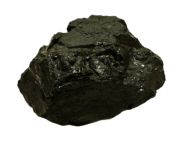I’m reposting an essay I wrote in 2007 about another mine disaster. It’s relevant to what’s happening now in West Virginia.
In March 2007, I testified before a House subcommittee on energy and mineral resources about the impact of climate change on public lands. There were seven witnesses, and one was Robert Murray, founder of Murray Energy and owner of the Crandall Canyon Mine in Utah. This, as everyone knows, is the mine that later collapsed, burying six miners; then it killed three men who were attempting a rescue when the mine collapsed again.
Murray, who sat next to me, shouted most of his testimony as he reiterated one point: Carbon regulation of any sort would hurt poor working people and the families who depend on his coal mines for their livelihood. He said, “The unfolding debate is totally skewed and one-sided, and it is preoccupied with possible speculative environmental disasters of climate change. Few are giving adequate attention to the destruction that we will definitely see … for American working people from … climate change proposals that have been introduced in the Congress … ” Murray is apparently so adamant on this point that he used a press conference after the mine cave-in to continue his lobbying.
Robert Murray became the public face of the mine disaster, but he’s also an American success story, a free-market wunderkind and a darling of the right. “I am the founder of Murray Energy Corporation from a mortgaged home,” he told Congress proudly. “The United States of America is a wonderful country. Today, I have 3,000 employees working in the most depressed areas of the United States of America.” The mine disaster, and Murray’s position on climate change, can also be seen as American entrepreneurship gone bad; it’s the story of how one’s balance sheet slowly becomes corrupted by the drive to get more, or get it faster, or get it cheaper.
People have been working in the Crandall Canyon Mine for more than 60 years. In 1997, the company bought a longwall, an advanced piece of mining equipment, which dramatically increased production. But then the coal ran out. According to the industry newsletter, Coal & Energy Price Report, the mine was near the end of its life, producing 604,000 tons in 2006, down from 1.6 million tons in 2005. Production dropped by more than half in the last 12 months. Unwilling to just shut it down, Murray’s company embarked on a new plan to extract every last bit from the mine. According to an expert quoted by the Deseret Morning News, the Crandall Mine before the recent disaster was pulling out coal that should have been left standing to support the roof. The operators used a tactic known as “retreat mining,” where miners pull the remaining pillars of coal and collapse the mine behind them. The federal Mine Safety and Health Administration may have allowed the mine to remove too much.
When he lobbies in Washington against any action dealing with climate change, Robert Murray stakes out a position in defense of the American working family; yet his own mines are notorious for safety violations. Crandall Canyon has received 325 citations since January 2004, 116 of them “significant and substantial,” according to the government. This year alone, inspectors issued 32 citations, 14 of them significant, and last month, inspectors said the mine violated a rule requiring the maintenance of two separate emergency escape passages in any given workspace. Ironically, MSHA found that this was one of the country’s safer mines, with fewer fatalities and fewer safety violations last year than the national average.
Murray’s other mine, in Ohio, also has a long history of safety violations, including five deaths in the last decade, according to a report by the Columbus Dispatch.
Carbon regulation could hardly hurt mining families more than killing off a member of the family. But Murray has painted himself as the friend of miners, showing his scars to say he is one of them. He presents himself as patriotic, humble and well intentioned. But speaking at televised news conferences during the Utah mine disaster, he appeared just the way I saw him in a Washington, D.C., hearing room — boastful, self-righteous, and arrogant.
You could say that Murray has fathered twin disasters. The underground disaster cost the lives of nine men and injured six others. The other disaster will occur in the atmosphere if his lobbying continues to be successful, and it will permanently affect the lives of the miners’ children. In both cases, Murray is doing what it takes to make his business flourish. Finished with the Crandall Mine, which he has now closed forever, Murray intends to begin retreat-mining the sky, pulling the very heavens down upon us all with the misguided sense that this is what his country wants of him.



